How to Turn Your Shopify Store into a Mobile App?

You're here because you're the owner of a Shopify store and have been looking for a way to turn your Shopify store into a mobile app where people can access your store easily on their phones and purchase products.
In today's mobile-centric world, we use mobile to make our lives easier. Since mobile is aligned with the internet, we have radically altered how we work, socialize, organise, and entertain ourselves.
According to research, 60% of customers say they download retail apps, and 58% of consumers mentioned that they prefer purchasing through apps. This is why running your business through an app is essential.
The problem is that not all startups have the budget and time to develop a mobile app for their store.
This guide will teach you how to bring your Shopify store to your fingertips by turning it into a mobile app.
But diving deeper, we'll go through the basics to give you more clarity.
Why Should You Build A Mobile App For Your Shopify Store?
Shopify is one of the giant platforms that helps small businesses build an online website that users can access easily in any browser but it is limited to only one system.
Make your eCommerce store accessible on any device or system including Android and iOS. Turning it into an interactable mobile app can double the profits, improve the user shopping experience, and be convenient for shoppers.
People view 4.2x more products per session within apps, compared to mobile sites. Sounds cool?
Moreover, this little powerhouse lives right on your customers' smartphones and gives users the option to interact with your store through their fingertips.
Let's check its benefits.
Benefits of having a mobile app for Shopify
Turning your Shopify store into a creative mobile app can offer numerous benefits, such as increased conversion rates, enhanced ecommerce sales, customer retention rates, and order value.
-
Enhance the Shopping Experience and Engagement
-
Increase Brand Visibility
-
Reach the Audience Worldwide
-
Cost and Time-efficient
-
Lower Cart Abandonment and a Higher Retention Rate
The one area of mobile commerce where mobile apps shine is delivering a better shopping experience, as they load faster than the website and their functionality work smoothly.
Offering an easy-to-navigation interface and an enjoyable experience to your customers can make them engage more with your app, resulting in a reduced bounce rate and a higher conversion rate.
Building a custom mobile app for your business helps you build a solid brand presence and create a positive impression in the user's mind. Additionally, when customers download your app, your brand logo and icon are displayed on their mobile devices, enhancing brand recognition and potentially leading to increased eCommerce sales.
The internet is the thing that connects businesses and customers globally. It is estimated that more than 57% of the world's population is now connected to the mobile internet, which means anybody in the world can install your store's app. The mobile app gives the ultimate option to reach the audience globally.
Developing a website costs around $15,000, which is twice as much as developing a mobile app. In this digital era, there are many tools and software available that can build mobile applications in minutes with a drag-and-drop editor. These are known as no-code app builders. The recently popular LEO App is known as the no-code app builder for Shopify stores.
It has a drag-and-drop interface, integration wizards, custom widgets, push notification options, instant deployment, and more. All it takes is a few minutes, and your app is ready to skyrocket.
Selling through mobile apps has a lower cart abandonment rate than websites. Thanks to push notification features that notify customers of what they left behind, You can simply send a notification to the user's device and tell them to open the app and make a purchase.
In simple terms, through this feature, you can increase customer retention rates and repeat buyers.
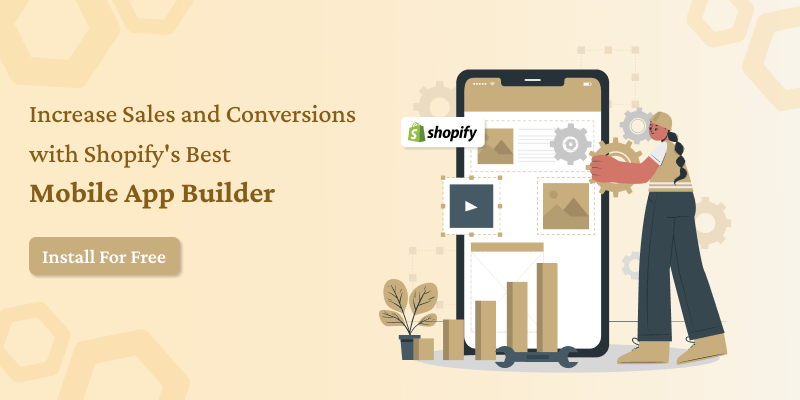
Quick Steps to Turn a Shopify Store into a Mobile App?
Now that you understand the benefits and have chosen a Shopify mobile app builder, let's walk through the process involved when trying to turn the Shopify store into a mobile app:
-
Make your Website Mobile-friendly
-
Choose a No-code App Builder
-
Customize your Mobile App's UI Elements
-
Configuration, Compatibility, and Testing
-
Continuous Updates and Maintenance
-
Manual process
We all know how important it is to make a website mobile-friendly and faster. It doesn't matter where you will access your store mobile app or mobile site but make sure your existing Shopify store is optimized for devices, including mobile and desktop.
Make it lightweight to ensure it loads quickly, provides a seamless user experience, and works smoothly.
This process is essential before we go to the next step.
Just like we said earlier, choosing a no-code app builder for your Shopify store is the most convenient and effective decision you could make.
The best thing about these no-code app builders is that you don't need to have technical experience and invest time learning coding to build extensive mobile apps for your store.
Moreover, it only requires a few steps to follow. You can have full control over the user interface (UI). With a drag-and-drop editor, you can add or remove any function you like.
It also gives you step-by-step instructions on your screen that you can follow and create from scratch.
If we talk about the best mobile app builder for Shopify, no one can come even close to the LEO Shopify app.
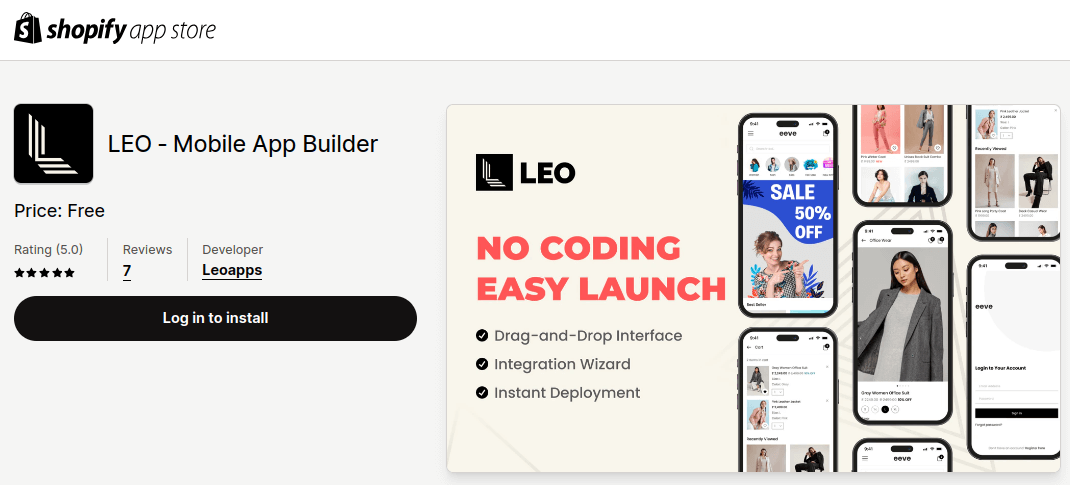
The most reliable and cost-efficient app builder that you can choose.
There is a wide range of customization features that you can use to create an app that meets all your expectations and is aligned with user criteria. You can easily customize UI elements, including layouts, colours, font style, banners, and user flow.
You can also customize products and categories to display them beautifully within the app.
After this process, the last step that remains is app configuration. You need to configure the app with the Shopify store, integrate the product catalogue, set up payment gateways, and enable features like unlimited alert notifications and user authentication.
Remember, your application should be compatible with all digital devices and operating systems. Also, take the time to test your app and fix the bugs. Make sure every functionality works smoothly and elements are intractable.
Make sure the mobile app builder you choose provides continuous updates aligned with all the latest versions and maintenance options.
Also, you have to change the interface as per time to check how users are interacting with the UI.
Another alternative process is developing your Shopify store app manually. If you're considering hiring developers to build a native app from scratch, be aware that this approach can be costly and complex.
What to Look for in a Mobile App Builder?
Before choosing the ideal mobile app builder for your Shopify store, there are several key factors to consider. Below are some important criteria to check.
-
Easy to Use and Customization
One of the top features to look at is ease of use and app customization. And most importantly check if the app builder has a wide range of supported plugins and widgets to make your work easier and even faster. The more user-friendly interface builders have, the less time you have to spend, and requires no coding skill for app creation.
-
Platform Compatibility
Before you pick a no-code app builder for your next project, make sure that it supports both Android and iOS platforms. This criteria is crucial as it helps you reach a wider audience and maximize the app's potential impact.
-
Range of features
This game depends on a range of features, the more advanced you get features, the better and more efficient you build an app. Make sure your preferred app builder has advanced features including product catalogue synchronization, push notifications, real-time analytics, in-app purchases, user authentication, social media integration, and any other functionalities that are essential for your business.
-
Customer Support
The most important factor is customer support. Only trust the platform that provides strong customer support and always reads to assist you in solving technical problems.
-
Pricing and Plans
Make sure that the price structure is aligned with a vast range of features and market standards. Consider your budget and the specific features included in each plan to determine the best fit for your needs.
-
Configuration and reviews
Last but not least, it's crucial to check an app configuration with the Shopify store and check is there everything functioning smoothly. Moreover, also look at the reviews provided by existing users of the app builders.
Examples of Shopify stores successfully converted to mobile apps
Here are some of the best examples of Shopify stores that have successfully converted to mobile apps.
-
Fanideaz
-
Skinska
-
Detcars
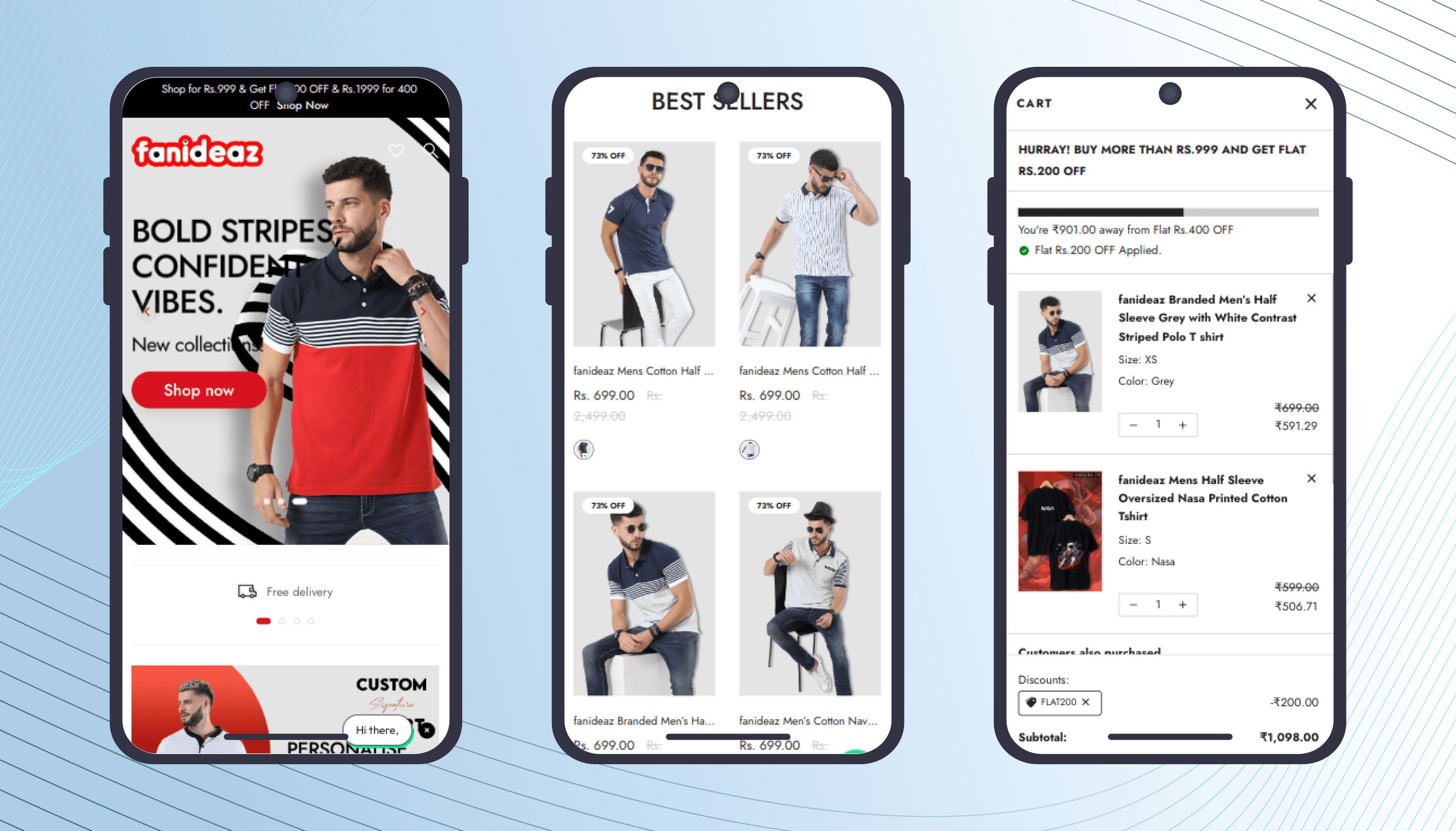
Fanideaz is an e-commerce store for branded apparel and provides designed and authentic clothes for men.
They recently partnered with LEO, a mobile app builder, and turned their store into a mobile app to maximize conversions and boost revenue.
They designed a simple UI, made products even more appealing with the right theme choice, and attracted their customers on mobile.
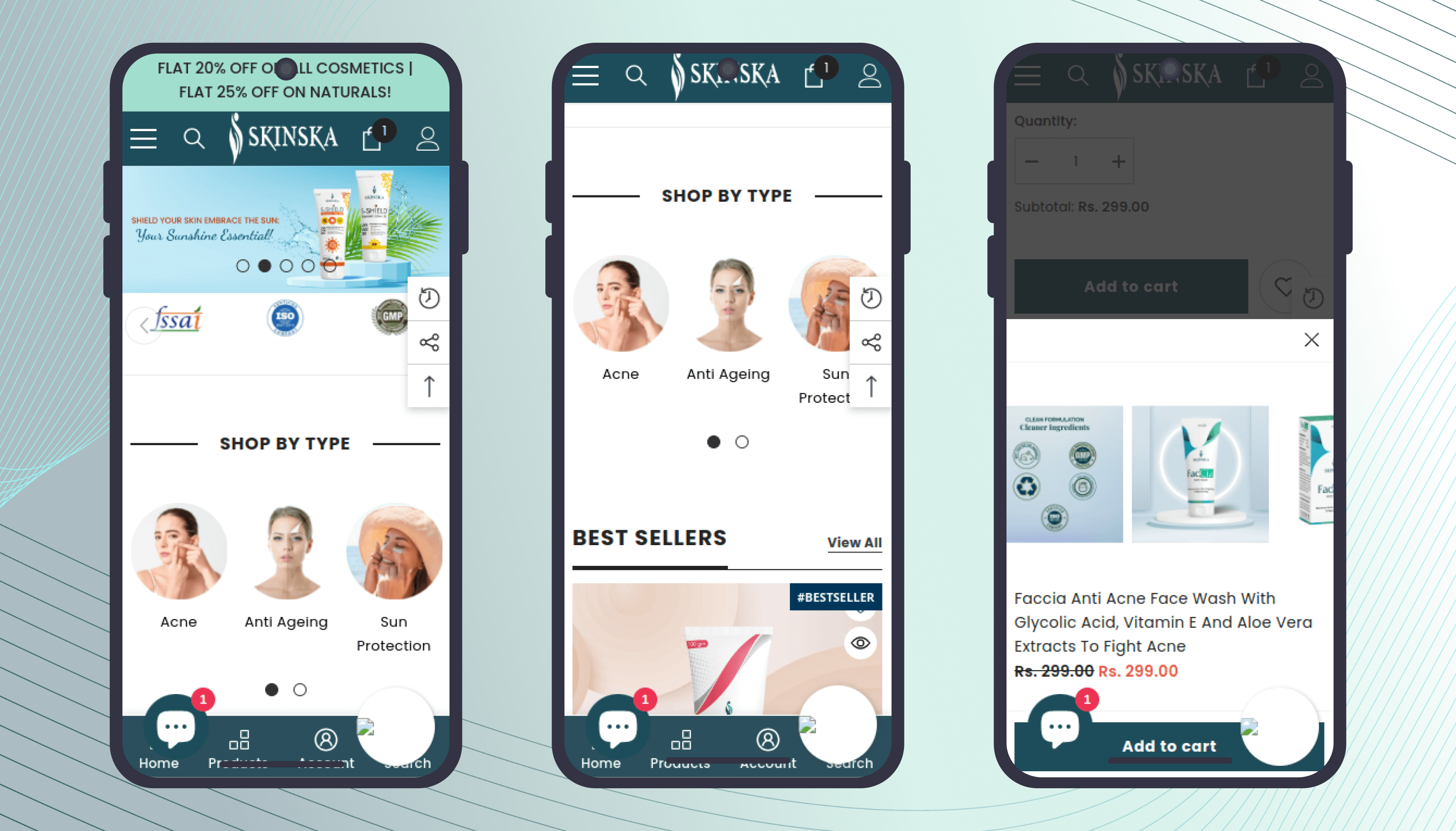
If you are a shopping lover, you'd love this brand. Skinska is a skincare brand that sells cosmetic products for acne, pigmentation, pimples, or hair fall.
The target audience of this brand orders mostly on mobile, so they decided to build their mobile app. Look at the sweetest tones of colour.
We are happy that they decided to work with the LEO app to turn their Shopify store into an attractive mobile app.
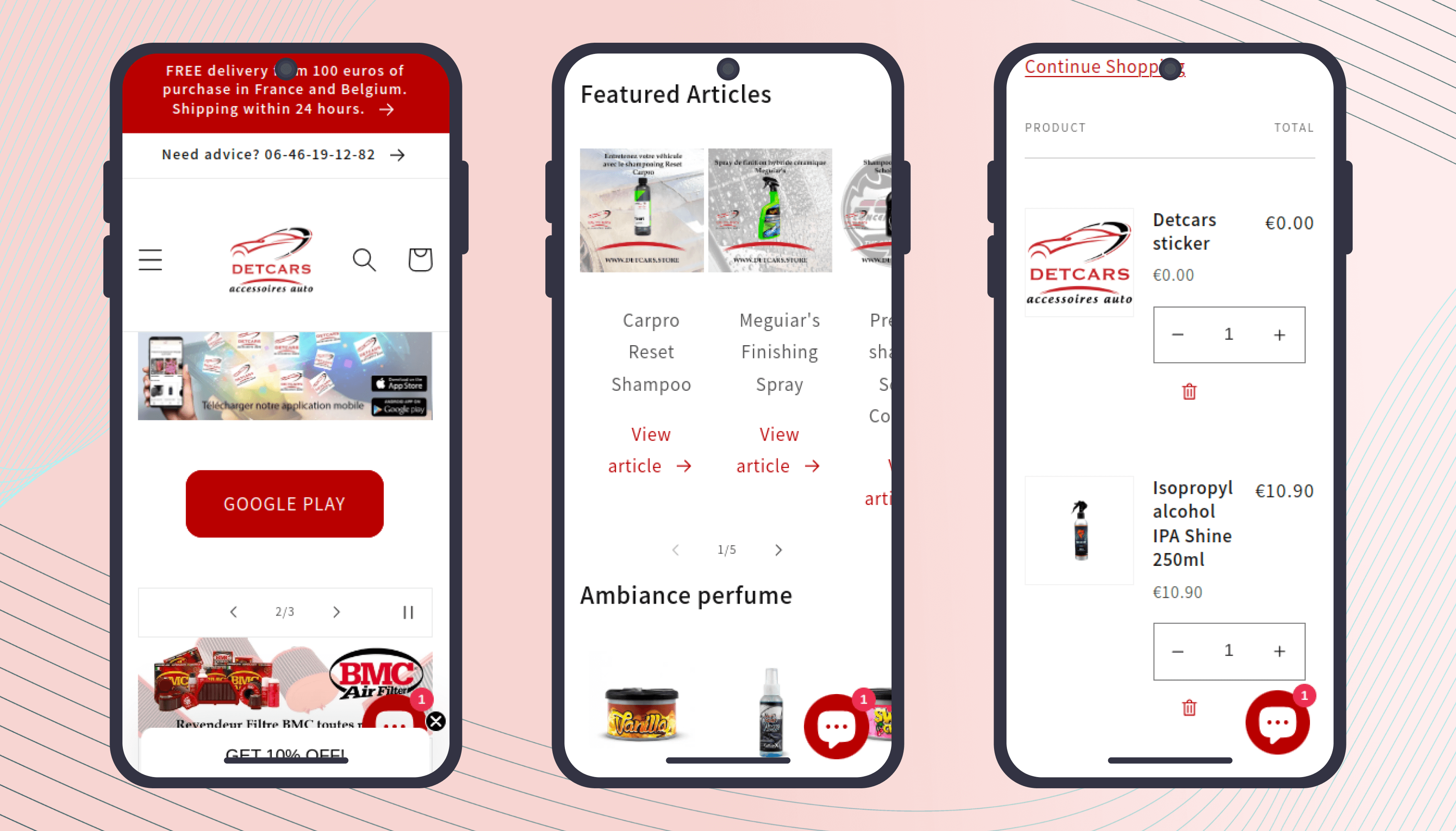
Detcars is an automobile company that sells accessories for cars. They already had a great conversion rate on their website, so they decided to maximize the conversion rate through the mobile app.
You can see in the above pictures how everything seems clear. We love the simplicity, and we definitely loved their app!
These brands already take advantage of the eCommerce app; when would you start?
Install the LEO mobile app builder and maximize conversions
If you're seeking a no-code app builder that lets you turn your Shopify store into a mobile app with a hassle-free process and provides the flexibility to implement advanced logic, Mobile App Builder is the perfect choice for you because it brings your idea to life.
This app has all the essential features and strong support that you actually need. From the customer's shopping experience to the app's layouts and loyalty to the conversion rate, this app handles all the tasks to speed up the process and save you time.
There is no issue with app compatibility or the working process. We at LEO make it easy for you to create the best eCommerce app design and development for your Shopify store.
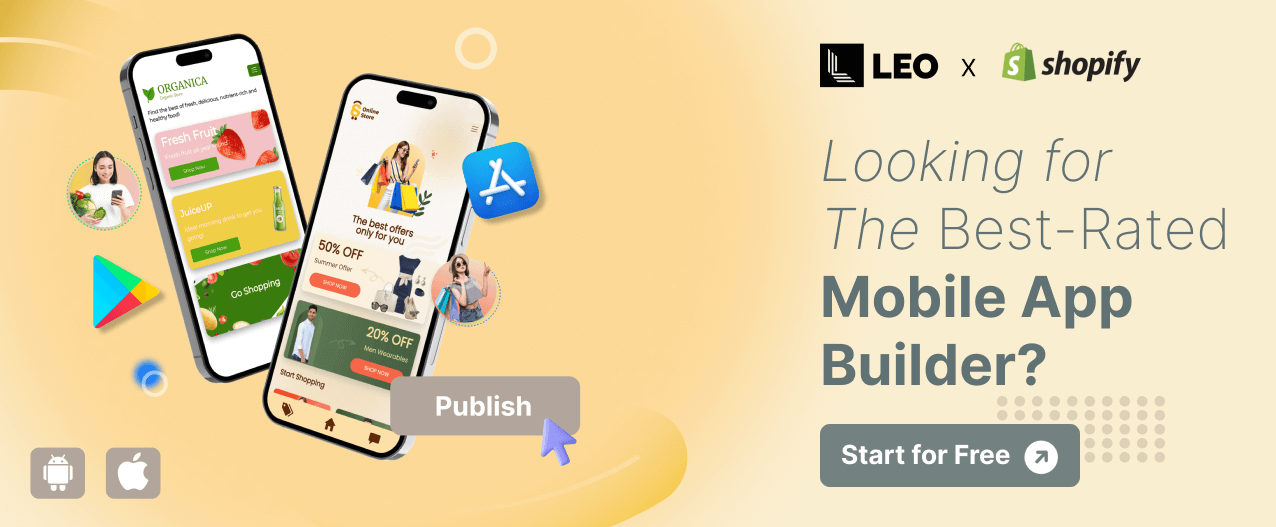
The bottom line
The mobile app for your e-commerce store plays a key role in making a strong brand impression, building a sales funnel for customers, and increasing the retention rate.
In this guide, we've broken down everything you need to know about how to turn your Shopify store into a mobile app that runs on both platforms Android and iOS, how to improve brand visibility, factors to consider before choosing any no-code app builder, and more.
Never miss an opportunity to stand out in the competitive eCommerce market, showcase your brand wherever your users are, and convert them into customers.
Don't just leave your money on the table; install the mobile builder app and leverage straight-to-app technology.
Frequently asked questions
- Can my Shopify store be an app?
- How quickly should the app be developed?
- Do I need an app to grow my eCommerce business?
- How much do the third-party Shopify apps cost?
- How Do You Promote Your eCommerce Mobile App to Get Installs?
- App store optimization
- Promote the app on social media.
- Get more installs through referrals.
- Run ads or paid campaigns.
- Use email marketing.
Yes, of course, your Shoupy store can be an app. Through third-party Shopify apps, you can easily design and develop mobile apps and launch them a few times.
Generally, building an app takes more time than building a building a website, as an app is developed for various devices and operating systems. On average, the fastest you can develop an app from scratch is around 4 to 5 months, and even longer to create a multi-platform app.
But with external solutions like using no-code app builders, you can create an app quickly.
Around 6.37 billion people worldwide use smartphones, and they spend 88% of their time on mobile apps. It would help if you still had a reason why you needed an app to grow your eCommerce business. Most customers prefer applications to purchase online as it is an easy, secure, and convenient process.
Every Shopify app or plugin has a different pricing structure, and it depends on which app you choose. Some are providing free trials, like the LEO app, and some are providing monthly subscriptions starting at $49 per month.
Building a mobile app is simplified, but how could you get more installs?
Follow these marketing strategies to promote your eCommerce mobile app and see your downloads multiply.
Never forget branding it's the most important marketing strategy to get more installs on the Play Store and App Store.

